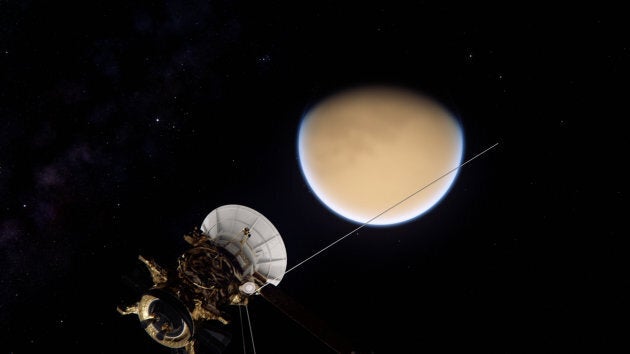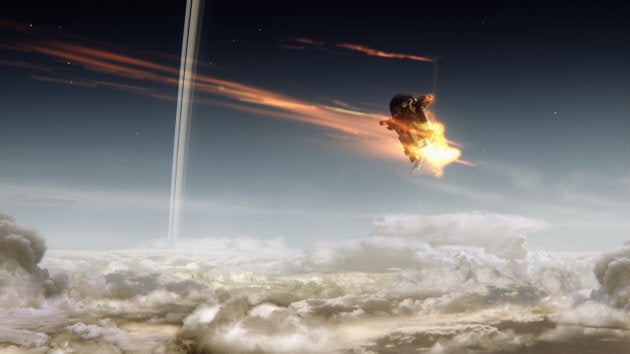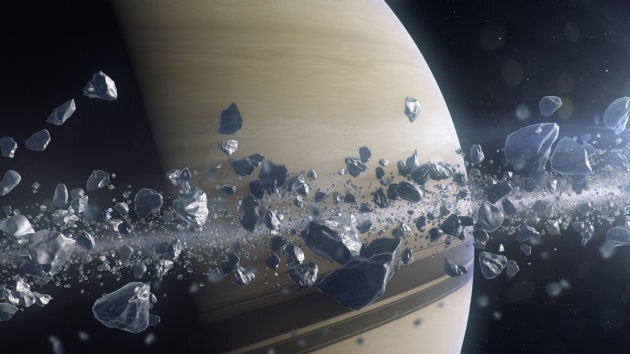
The Cassini spacecraft's mission will come to an end on Friday, when it plunges towards Saturn and is vaporised by the pressure and temperature of the planet's atmosphere.
Cassini launched into space on October 15, 1997 on an exploration mission and after a seven-year journey to the ringed planet, entered obit around Saturn in 2004.
After 20 years in space, Cassini has become one of NASA's most important spacecrafts, as its discoveries opened our minds to the possibility of finding life in outer space.
"Cassini has redefined our understanding of the outer solar system and made discoveries that we never even thought would be relevant when Cassini was launched that have effectively started to define the future of exploration," Professor Alexander Hayes from Cornell University told HuffPost Australia.
Cassini's premise was different to other missions in that the aim was to discover things about Saturn and outer space generally.
"One of the things that excites me about Cassini is that it is one of the great explorers. Cassini is a mission that was set out to explore the solar system and it was not set out to answer specific science objectives," Hayes said.
Cassini was instrumental in building a picture of what the surface of Saturn looks like, as well as the state of the planet's moons, including Titan and Enceladus. The spacecraft found that tiny icy jets shoot out from Enceladus and that Titan's chemistry and atmosphere functions in a similar way to Earth's.

"You are looking at a place [Titan] that is arguably the most Earth-like body in the solar system, but also one that has chemistry going on in its atmosphere, similar to the chemistry that was going on in Earth's atmosphere during the emergence of life," Hayes said.
"[Cassini] unveiled this complex system of weather and landscapes that look eerily similar or strikingly similar to those here on earth, there are dunes ... there are mountains, there are channels, there are lakes and seas but the lakes and seas aren't water -- they are liquid methane and ethane.
The dunes are not made of silicon sand, they are made from organic particles more like plastic, like plastic shavings or styrofoam beads."

The Cassini mission also had a role in promoting collaboration between countries, different generations of scientists and across political boundaries. Hayes says that five generations of scientists and 17 countries worked collaboratively on the Cassini mission -- teamwork that could only be possible with such a long-term project.
"I cannot think of any other mission in... planetary science that had the success of international collaboration that Cassini had," he explained.
"Cassini has about five generations of scientists working on it, ranging from students and undergraduates of today to the senior scientists that have been around since the conception of the mission in the 1980s.
"To see the interplay between those vastly different points of view, between people that have multiple generations between them has ... given Cassini an edge."

So, what is the future for outer space exploration of Saturn and its moons? Well, Cassini has proven that there is a habitable environment for life on Titan, so could searching for life in outer space be the next step?
"The question is not so much if there is a habitable environment, but more if that environment is inhabited -- are there life forms there? Before Cassini, we obviously had no clue that the best location arguably in the solar system to look for life could be this small moon," Hayes said.
"It is not a question of if we will go back to the Saturn system, but when."
National Geographic's special event documentary 'Mission Saturn' premieres this Sunday night 7.30pm AEST.
